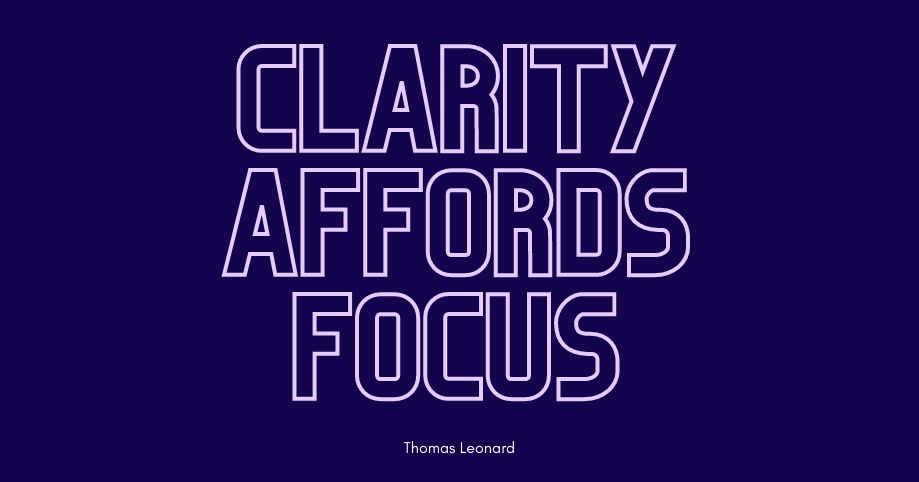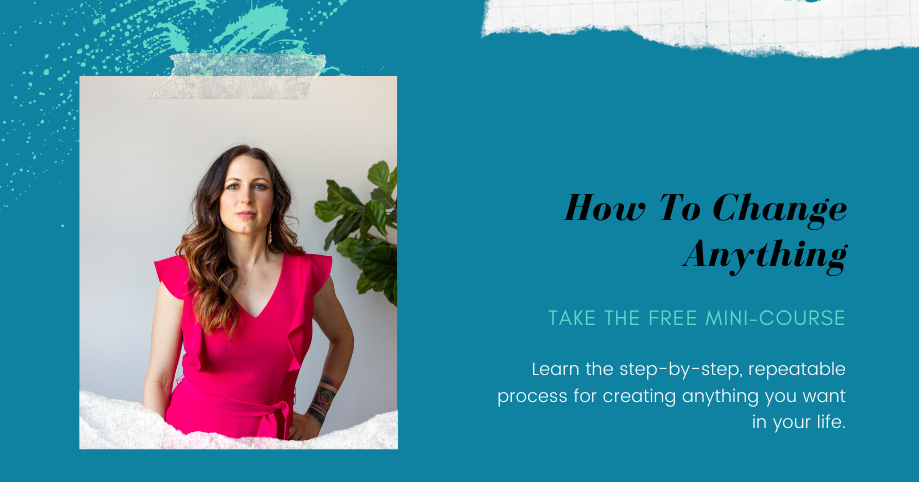How To Set Goals For The Life You Want
Instead of the one you think you SHOULD have.
To listen to this blog in Podcast form, press play here:
Do you remember the answer you gave to the question: ‘what do you want to be when you grow up?’
Some of the popular answers from when I was growing up were:
Astronaut!
Teacher!
Firefighter!
Nurse!
Mom!
The beautiful thing about asking a child this question lies in their innocence around how the world works. Most likely, they haven’t yet learned that life is hard and you don’t always get what you want. From this untainted mindset, children are able to dream from a no-holds-barred kind of place that allows them to imagine themselves as… well, anything.
By the time most of us reach adulthood, a couple things happen to our dream-lives:
1. Our parents and our experiences tell us who we should and shouldn’t be in the world,
2. We forget about our childish dreams, and
3. We accept our fate with the gifts we think we have and the limitations we’ve discovered about ourselves.
Now, this gradual disconnection from what we really want isn’t always ‘smart, well-adjusted adulting’. For many of us, disconnecting from our dreams turns into a form of repression. We’re meant to explore and grow and change in our ideas about ourselves and the world we live in – and in order to do that, we have to challenge our current reality and occasionally (lovingly) let parts of it go. This ‘letting go’ process is what allows you to reset and make sure you’re moving forward in the direction you’re ACTUALLY excited about, rather than settling for what you think you ought to have.
For many of us, disconnecting from our dreams turns into a form of repression.
The life you actually want doesn’t have to be a dream. You can ditch your ‘shoulds’ and decide to work towards the life you want instead of the one you’ve settled for.
Here are some tangible steps for setting goals for the life you want instead of the one you think you ‘should’ have:
Pre-step 1: understand your ‘shoulds’.
If you are living in ways you think you ‘should’ live, something’s out of alignment. The word should is a shame word, it comes from a judgement of what’s right and wrong and we use it to look at our lives from an outside perspective rather than an inner knowledge. This outside view tells us we ‘should’ be a certain way, instead of us deciding and choosing a path based on our values. If you’re ‘should-ing’ on yourself, examine the beliefs behind each statement. Are they true? Where did they come from? What if they weren’t true for you?
Once you understand your ‘shoulds’, you can move on to the process of setting goals for the life you actually want (as outlined below).
1. Allow yourself to dream: what if you said yes to that dream?
Let’s take this back to age 5 on the playground. You’re laying in the sand after several jaunts up and down the slide and your friend asks you, what do you want to be when you grow up?
What do you say? This might be a memory you had from what you’ve said before- or it might be your inner child sending you some wisdom. Write down your answers regardless of the case.
Now, let’s take this to the present moment. What would your ideal life look like? What would you spend your time doing? How would you like to feel? Notice the resistance that might come up here – you’re going to hear yourself think things like: ‘I can’t afford to do that!’ or, ‘I don’t have the time!’ These are just old beliefs based on your old ideas about what your life is capable of being. In order to set goals for the life you actually want and to get out of all the ‘shoulds’, you’ve got to get past your inner critic. Steven Pressfield says: “The ability to overcome resistance, self-sabotage and self-doubt is way more important than talent.’ Stop worrying about HOW and just let yourself dream it up first.
2. In order to get honest about setting goals for the life you want instead of the one you think you should have, you’re going to need to think in terms of what you want your life to look like, not necessarily what you think is possible based on what you’ve already experienced.
Dr. Joe Dispenza’s transformative work in neuroscience illustrates this beautifully: our thoughts create patterns in our brain that form well-worn ruts (called neural pathways). After a while, our thinking becomes really patterned and when we think the same things over and over, we get the same results in our lives. You’ve decided by now what your life can and cannot look like. In order to create something new, you’ll need to entertain new thoughts about what your life could be. Get yourself out of the box you’ve created for yourself by allowing yourself to challenge your thoughts- especially the negative, self-defeating ones. Ask questions like: ‘what if I could do that?’ or ‘What would that look like if I said yes?’
Research shows that simply thinking new thoughts about your life can create brand-new neural pathways in your brain. This means your brain will start helping you find new ways to show up in the world – ones you’ve never thought of previously.
3. Get crystal clear about this new life you’re imagining for yourself.
This involves a whole-picture reframe of what your life could look like. What do the possibilities for your life really look like? Get clear by answering these questions:
What time do you get up in the morning?
What do you spend your day thinking about?
What kind of clothes are you wearing?
Where do you live?
How much money do you make?
What do you do for work?
Who do you surround yourself with?
What lights you up?

4. This next step is essential when setting goals for the life you want instead of the one you think you should have: you MUST Identify how long you’re willing to work towards this life and what you’re what you’re willing to give for it.
Seth Godin talks about this idea on this episode of the Tim Ferris podcast. Paraphrasing, he sites, if your dream job is to start a technology company, and you’re not willing to take out a second mortgage on your house for it, it’s not the right goal for you. Basically, he’s saying there’s always a cost for the life you want to live. You will have to give up parts of the life you have now in order to create something new. If that’s not worth it to you, cross the idea off your list and choose something else. It’s okay to not want to sacrifice, it just means your dream life isn’t quite in alignment with what you’re willing to give for it (which means, it will *most likely* always be a dream).
On another level, if you decide you want to be a minimalist, but you don’t want to eliminate anything from your life – well, you can’t really follow through. Make sure you choose dreams and goals that you’re willing to do the work for, otherwise you’re always pining for something that’s not aligned with your personal reality.
5. Break your big goal down into minuscule steps.
Once you have a clear picture of what you want and you’ve identified that you’re willing to work for it, break the big picture into minuscule steps. Like, smaller than you would think. There are a couple ruts that are common at this step: 1. Waiting for motivation to magically get you going, and 2. biting off more than you can chew. Habit-guru and bestselling author James Clear sites the problem with waiting for motivation to move toward your goals: it’s much better for your momentum and how your brain registers success to focus on completing small actions consistently, rather than trying to sprint your way towards success or wait for a spark of motivation to magically get you there.
Does the life you want involve you traveling the world? Start with something super small like scheduling a time each week to look at maps to see where you’d like to go, or subscribing to a worldly magazine and reading an article each week for inspiration.
Is your goal to become super-fit and design a line of workout clothing? Start with researching workouts that light you up, buying some running shoes, or hiring a personal trainer.
Make these steps small, measurable, and actionable.
6. Make space and schedule your first small steps.
In order to set those goals for the life you want instead of the one you think you should have, you’ve got to make space for your new direction and schedule your steps into your current life. Take a look at your calendar. What’s no longer aligned with the goals you’re setting for your new life? What can you eliminate to free up your time and energy? Cancel all those commitments and replace them with your new, tiny, action steps toward your new goal. As my favorite success-guru Marie Forleo says: “if it isn’t scheduled, it isn’t real”.
7. Revaluate your big picture often.
Life happens (remember 2020!?).
Return to your goals and vision for your life and update it as your life grows and changes. This picture will morph and change as you do, and it’s important to adjust your goals as well. Stay connected with yourself and what you want, and don’t forget your big picture. ALL big things are created one small step at a time, so remind yourself of the steps you can take every single day to realize your dreams.


View comments
+ Leave a comment